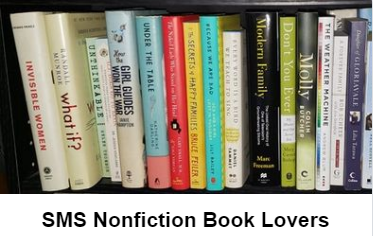Thanks to Callista for giving me the opportunity of addressing you, her readers, in this way.
What happened was this: A few days ago, Callista contacted me, having come across a press release about my recently published book, Paris Movie Walks – to which she had replied to my publisher, with refreshing candor, that she was “not interested”. If I was game, however, she could offer me a slot on her blog as a “guest poster”. Anything “book or reading related” would be welcome, she suggested, adding that – obviously – I could also use the post to write something about my book.
Now call me strange, but I am somewhat reluctant to review my own book or even to talk about it in great detail. (I am easily embarrassed. To me, this is like being asked to say how bright and beautiful my kids are.) So, instead, I would like to, if I may, share a few thoughts with you about travel guides in general, the good ones and the bad ones, and the pitfalls involved in trying to avoid writing one of the latter kind.
Now, good travel guides come in all shapes and sizes: it is fairly difficult to generalize about them in any way. Bad ones, on the other hand, generally fall into one of two categories.
Bad Travel Guide Category One is often a quite glossy affair, something that has been released by one of our major publishing houses. It has shiny pages, loads of colorful maps and pictures and appears eager to cover all the bases. Its authors – because there is normally more than one – have compiled these guides diligently and dutifully. A little too much under the assumption, perhaps, that their readers would approach the foreign city or country they are writing about in the same frame of mind. These books appear to be based on the conviction that people don’t travel for fun but out of a sense of solemn duty.
The persons these books talk to are academics on a field trip. Who else would be interested in lengthy descriptions of 13th century masonry techniques or painted-glass windows? The antics of long-dead despots (why, by the way, are all French kings called Louis? and why are they all named after Super Bowls?) or, worse still, their annoying little mistresses? And who else would want to spend most of his time (judging from the space these guides devote to them) in musty museums – places that have been designed to sap your will to live – and that, quite often, on a hot summer’s day to boot?
It is in books like these where you can find a possible destination for a day trip summarized as follows: “Village with a 14th century church, Gothic with some later elements, a 16th century Renaissance town hall, and a museum with two minor Tintorettos”. Now what’s wrong with that? Everything. Because it tells you nothing about the place you would really want or need to know. It’s like being at a party, and someone approaches you to introduce one of his friends. “You must meet Bill”, he says, “Bill broke his ankle last year while playing tennis and lost a tooth when he was a little boy.” Uhhh, yes, Bill, so pleased to meet you …
Bad Travel Guide Category Two is a different animal. Generally there is only one author, and his or her name is displayed on the front page. We understand immediately: This is a much more personalized account, and we are, for better or for worse, invited to experience the city or country through the eyes of one particular person.
In principle, this can and often does work very well indeed. Unfortunately, however, some authors are much more interested in talking about themselves than about the city or country they have been hired to talk about. I once read a walking guide of Paris where one of the contributors suggested that the reader follow her to all the places where she and her Lesbian friend had been having a good, or, as their affair progressed towards its bitter end, increasingly less of a good time. I mean: puh-lease.
What the writers of travel guides must understand is this: the book is an instrument to assist the reader in organizing a successful trip, essentially not all that different from a map or a compass. It is not a piece of literature. It is not a stage for you to express yourself. It is not about you.
Which brings me back to Paris Movie Walks. Did I manage to avoid these and all the other pitfalls of travel guide writing? Well, probably not all of them all of the time, but at least I tried. I set out to write about something that everybody has an interest in, kind of at least (people may like or dislike music, painting, literature and so forth, but I have never met someone who seriously claimed that s/he had never watched or enjoyed a movie). I showed Paris, this unique and beautiful city: deservedly the number one tourist destination in the world and a “movie star” in her own right, from both familiar and unfamiliar angles, reminding my readers of some of her greatest moments on the silver screen and recommending some others of which they may be less aware. All of this while struggling to avoid academic discourses, tedious flights of fancy and self-indulgent musings of any kind.
And did I manage, in the end? Is this particular kid bright and beautiful? I am too embarrassed to say, really. Ultimately, that’s for you to decide.
~~~~~~~~~~~~~~~~~~~~~~~~~~~~~~~~~~~~~
Note from Callista:
Buy it at Amazon!








